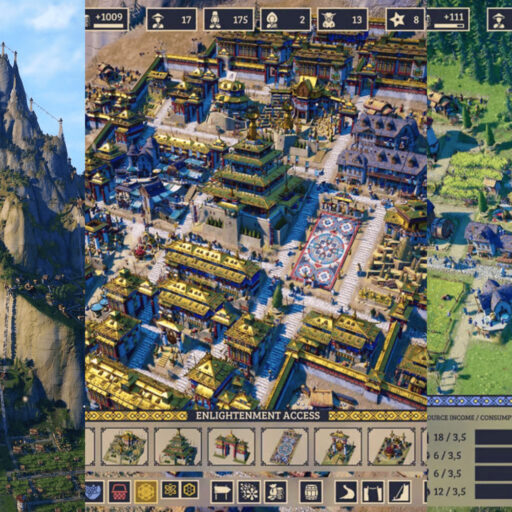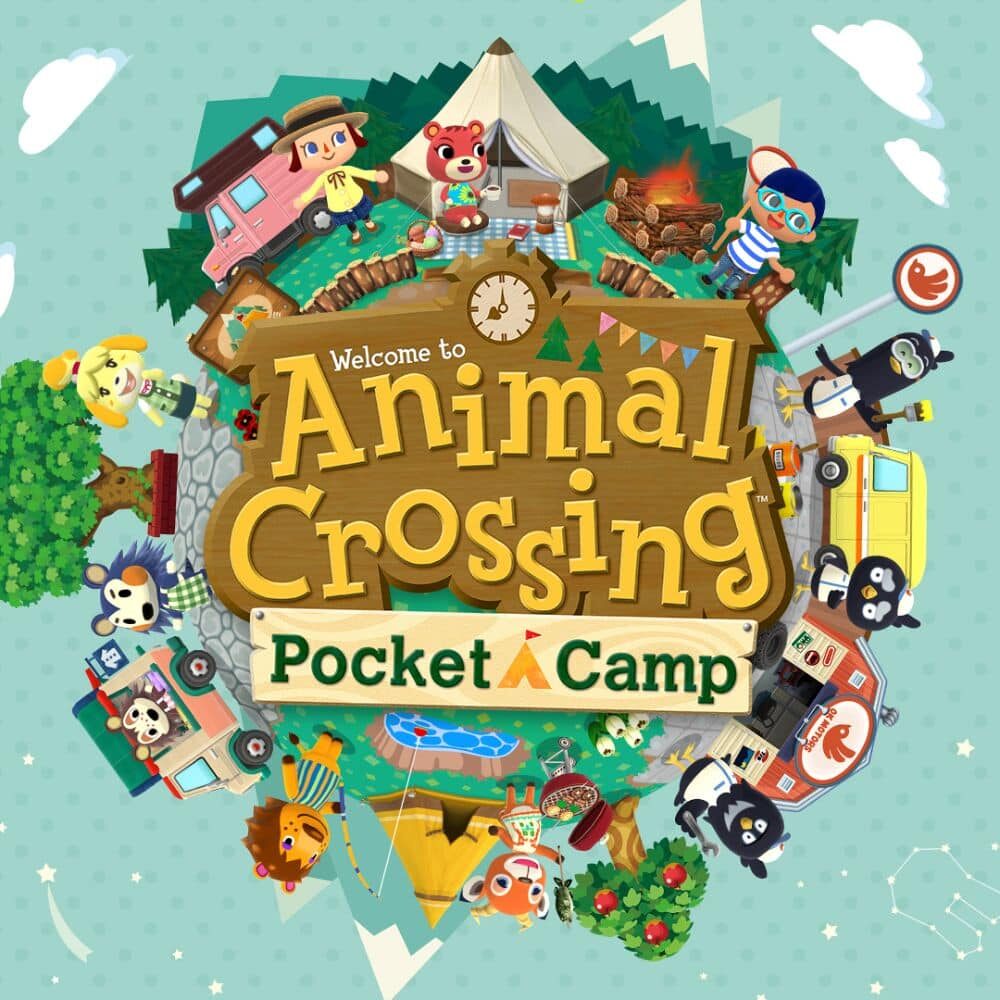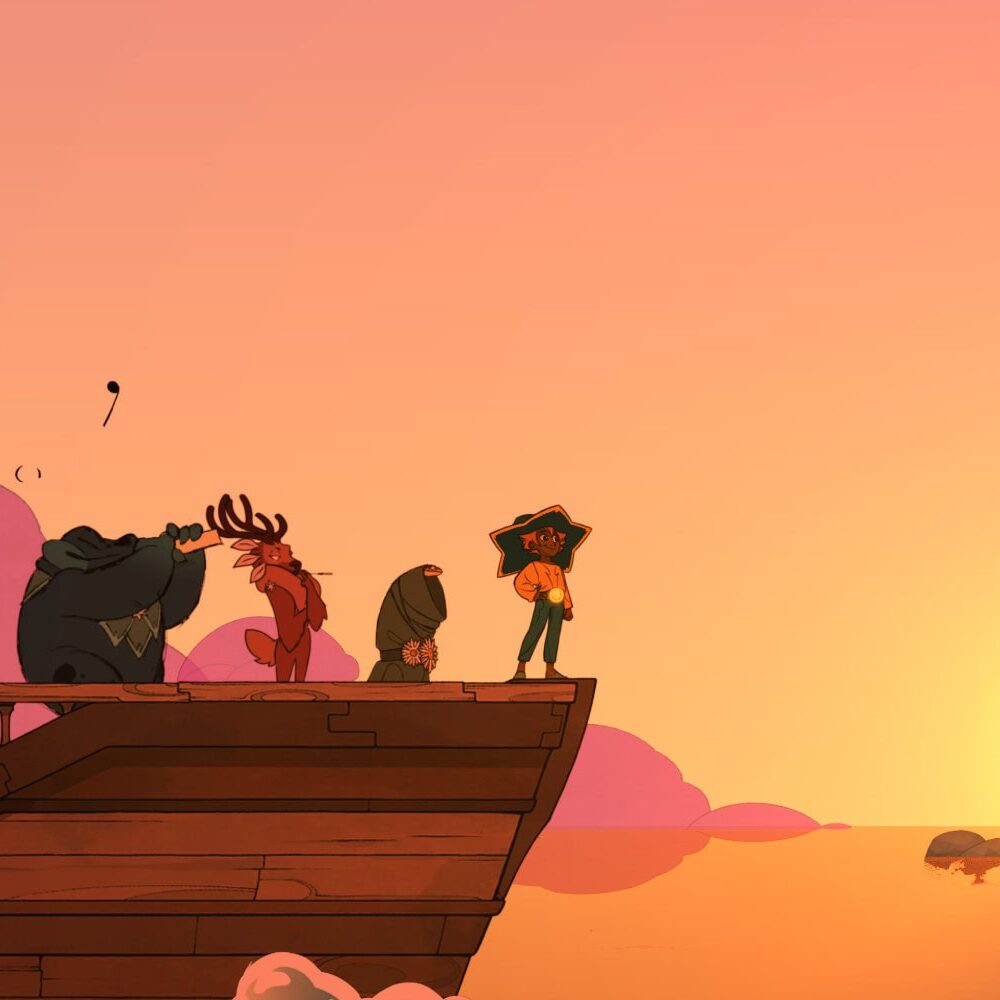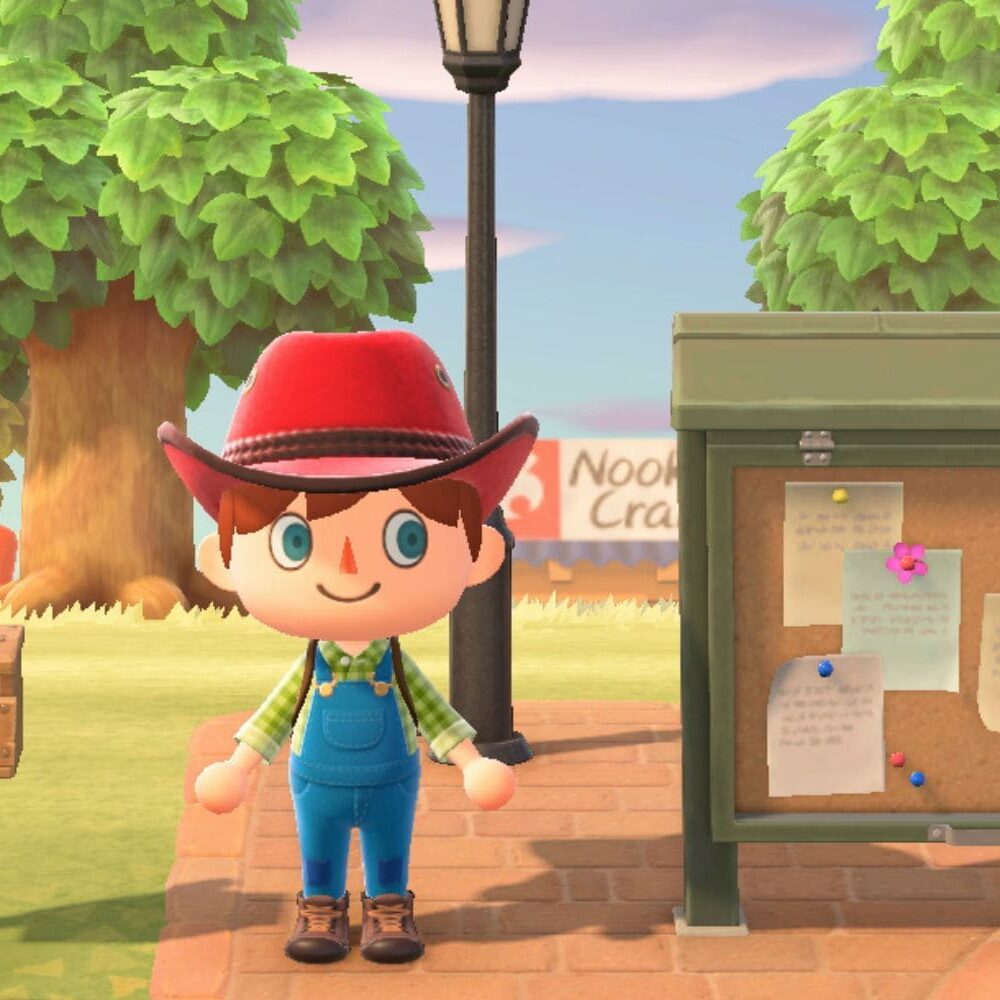Over at G.URL, we were lucky enough to get early access to the upcoming title
Laysara: Summit Kingdom; here’s the scoop!
I was honoured when G.URL approached me to review such a unique looking title; both
in style and – in comparison to the games I typically play – genre. Laysara breaks into the scene as
the debut title from developer Quite Ok Games. The game is an accessible, strategy-based,
construction and management simulation. It’s also the first one of its kind, focusing specifically
on the creation of city settlements atop different mountains. This, alongside its relaxing
atmosphere, effectively sets it apart from others in the genre.

Immediately upon booting up the game, the title screen of Laysara greets the player with beautiful art that looks almost hand-painted, and a wonderful soundtrack. The art style and music feel somewhat reminiscent in tone to Avatar: The Last Airbender, and that’s saying something! Though the game is in Steam Early Access, it currently has three modes— standard, challenge, and free build.
Upon its official release, the game is planned to gain a fourth mode titled ‘campaign.’ I chose to play in standard mode, to assess the game in its most authentic form. There’s a lovely voice-acted opening cutscene that explains how the kingdom of Laysara has been shrouded in a mysterious fog, and
it’s the players responsibility, with the help of some key elders, to reignite commerce and
establish settlements to keep the kingdom alive after relocating to the mountains above the fog. I appreciate the inclusion of this story and exposition— it comes across as extremely charming
and showcases even more of the impressive art that the game has to offer. It’s personal touches
like this that make for an engaging and immersive experience when playing Laysara.
Once exposed to the game properly, the first goal is to build an outpost district for workers on the side of
a mountain. There are a myriad of controls which, for me, was intimidating. You place several
roads, residential buildings, a farmer’s market, and shrines for enlightenment. The enlightenment
fester was particularly fascinating to me, as even the placement of each shrine shows the player
the communal outreach it can support. The amount of buildings available only increases as you
progress, and the fulfillment of residential needs as well as facets of commerce are the
responsibility of the player. I think that the main complexity in Laysara is proximity and flow,
but it is in now way a flaw. For example, I found that it took me a long time to figure out how to
get workers to the market, only to realize that I hadn’t properly placed a road. When progressing
to the construction of the artisan district and so forth, it became difficult to understand why my
town wasn’t meeting the requirements of goods distribution, or, more shamefully, why my yaks
were unemployed. We cannot have unemployed yaks!
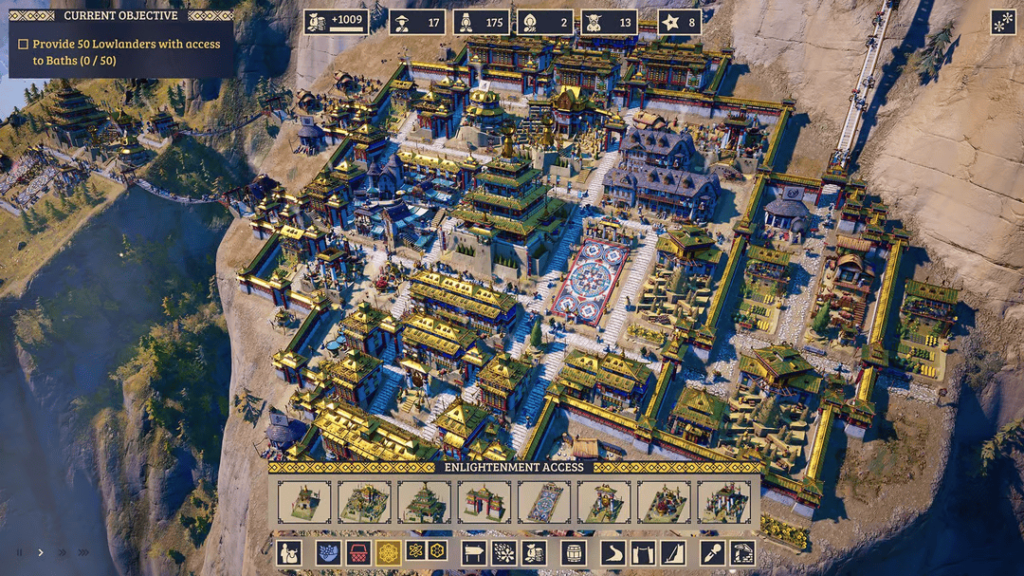
Intuitively, it actually turns out that a great deal of the gameplay in the standard mode of Laysara is derived from these issues. It becomes a puzzle for the player to figure out the best setup for each of their cliffside settlements, the proper flow for transporting goods, and the best use of available space. This gets especially interesting when attaching each district, making them accessible from the other and seeing how to flow works then. It can be an intricate task— I was extremely hung up at times on the means of
transporting goods. I found that my copper excavation site wasn’t reaching supply, nor demand.
It took me quite some time to figure out why, but I did— I placed buildings that allowed for a
wider range of export, and it was so fulfilling when it worked. The stakes are not dire, but if
things are not flowing properly it becomes impossible to move forward until the issue is resolved
because you have to keep building to do so and each building costs money to place— and
lacking resources equate to stagnant finances.
Although it’s difficult to understand why a specific layout isn’t working at times, it becomes a fun challenge for the player to make a feasible layout, and it gets a bit easier the further they progress. It’s so satisfying to solve each problem that surfaces, even if it takes some patience. The constant adjustment of the town is made all the more enjoyable due to even more incredible music— I felt so at peace while playing that I had to remind myself quite often to take notes for this review! The game strikes a brilliant balance between stakes and tranquility.
That being said, although the game doesn’t feature any explicit content, it may not be the
most suitable for younger players because of its difficulty, but there’s no harm in trying! Perhaps
in doing so you’ll discover a baby genius amongst your ranks. If I could figure it out, surely
anyone can. By the time the game tasked me with establishing a third district, I finally felt
prepared and up to the task. Instead of placing things wherever I wanted like I had been before, I
tried to go in with a plan. I placed the first set of buildings (bee apiaries) scattered along one
particular cliff edge in order to leave as much space as possible in the center, then connected
them with a road. After that, I used the empty space to build a monk academy, place their dorms,
and create a residential area close to the first set of buildings so that there would be people to
work there (beekeepers). Then, I checked the tab of each goods distribution center to make sure
each district was receiving the newest resource (honey). I upgraded the residential houses once
their individual needs were met, and placed some donation centers in populated areas. I had
finally gotten the hang of things, and for the first time in my playthrough I was making steady
money!

The higher up the mountain your cliffside settlements go, the more intricate things
become, but the more prepared you are to deal with the issues that occur. There also seems to be
the implementation of various events in the works. So far, I only experienced an avalanche, but
by placing thick wooded areas near the base of the ridge, my trading post settlement went
unscathed. All of this occurred on the tutorial mountain alone, I can’t imagine how wild things
get beyond that. There are several mountains in Laysara for the player to develop into intricate,
functioning communities. Each mountain has different terrain and climates that affect what
resources the community built there can produce, and I’m so eager to see how that changes the
experience.
If you are too, I implore you to check out the captivating experience of Laysara:
Summit Kingdom, available now on Windows through Steam Early Access for 19.99 USD to
play as it develops, or wait and keep an eye out for the official launch!
Enjoyed this story? Support independent gaming and online news by purchasing the latest issue of G.URL. Unlock exclusive content, interviews, and features that celebrate feminine creatives. Get your copy of the physical or digital magazine today!

